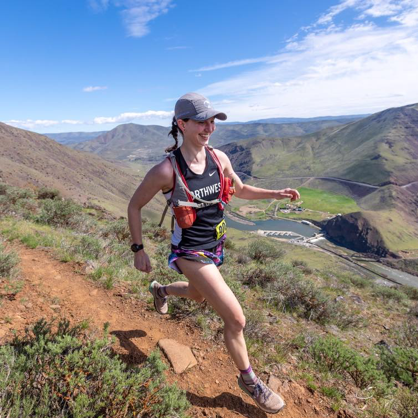“Your BEST posture is your NEXT posture.”
Who Is Dr. Hallyburton?
I am a Doctor of Physical Therapy, specializing in orthopedics and spine care. I practice outpatient orthopedics at a private practice clinic in Albany, OR and I’m an avid distance runner and climber. I went to school for 7 years straight so I can relate to the discomfort of sitting for hours on end studying. Although, PT students have a funny reputation for dressing in stretchy clothes and exercising in hallways during study breaks.
What are some of the physical symptoms of sitting too long??
I get a lot of patients who think that their symptoms come from sitting with “bad posture.” I have good news and bad news.
Good news: There isn’t a “perfect” posture, and it’s actually okay to slouch now and then!
Bad news: Sitting in ANY sustained posture for more than 30 minutes can lead to muscle strain, aches, and tightness that can predispose you to other issues down the road. The typical symptoms of prolonged sitting include developing tight hips, tight shoulders, and stiffness in your mid-back. This could all lead to problems such as low back pain, neck pain, and shoulder problems.
The best thing you can do is change your posture regularly, and move around a little bit at least every 30 minutes. Remember the saying, “Your BEST posture is your NEXT posture.” That means, the more you move around and find different positions, the less tightness you’ll develop in your muscles and joints.
Are there a few quick tricks that you can do with your study space to help?
Even though I just said that there’s no one perfect posture, there are ways to decrease strain while you are sitting.
My biggest piece of advice is to make sure that your head isn’t hanging forward in front of your shoulders for extended periods of time, which often happens when you’re working on a laptop. In order to have a comfortable position with your arms you have to look down at the screen instead of gazing forward. This can put strain on the neck and increase forward hunching of the back and shoulders.
I recommend getting an external keyboard and mouse and propping the laptop up on a stand (or a couple textbooks) so that you can look straight ahead while still using the keyboard/mouse. The same goes for using a desktop computer, make sure your monitor is at a level that you don’t have to tilt your head down to see it. Now, if you’re the type of person who likes to go somewhere like a coffee shop to study (like me!) and you can’t bring your whole setup with you, then just make sure you’re taking breaks and stretching regularly.
As far as what type of chair to use, I would use whatever helps you feel comfortable and focus the best. Some people sit on exercise balls to try to facilitate good posture, but these can force you into being in the SAME position for too long, so if this bothers you then a normal desk chair is just fine because it allows for shifting position. However, if you’re fidgety and you like to bounce around because you focus better when you’re actively moving, by all means use a ball for a chair.
What was your favorite (or a few) study break stretches while you were in physical therapy school?
To keep it simple, just imagine the position you’re in while sitting and try to do the opposite of that.
Shoulders and chest rounded forward? Bring your hands behind your head and arch your back to open up your chest muscles and thoracic spine.
Hips bent to 90 degrees from sitting in a chair all the time? Your hip flexors will love some breathing room, so try standing up and doing a lunge hip flexor stretch, especially if you’re about to go walk around for a while. Any kind of spinal rotation or twists are also great to loosen up the spine, hips, and shoulders.
Worried about how long to hold a stretch? Don’t be! Doing stretches in a “dynamic” fashion where you move in and out of a stretch in a controlled fashion, holding for just a few seconds, is all you need to prevent stiffness from taking hold.
When I was in PT school, I tried to mix up my study positions as much as possible just to avoid sitting for so long. My favorite was to lay on my stomach on the floor and propping on my elbows, which really opens up the upper back and prevents the hips from being flexed all the time. Alternating between sitting and standing at a taller surface is another great way to change positions.

